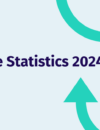
October 9th is Ada Lovelace Day, marked in the diary worldwide as a day to celebrate the achievements of women in STEM and honour the memory of one in particular: Ada Lovelace, the world’s first computer programmer.
The contributions of women to the fields of science, technology, engineering and mathematics are poorly recorded and unjustly recognised throughout history. In 2014, a European-wide survey found that a quarter of people can’t even name a single famous female scientist. In the UK, only 13% of English Heritage blue plaques celebrate the achievements of women. A quick Google of the phrase “famous scientists” returns an overwhelming majority of white male scientists to your screen.
The women listed below overcame incredible obstacles to achieve what they did, especially in the era they did it. They made groundbreaking discoveries, they altered the way we live, and they lit the way for women in STEM today. And yet, most people have never heard of them. Read on to discover nine pioneering women who altered the history – and future – of STEM.
1. Elizabeth Blackwell (1821-1910)
Elizabeth Blackwell was the first woman in America to receive a doctor of medicine, after graduating from the Geneva Medical College in New York in 1849.
She spent her life championing medical education for women and careers for women in medicine. In 1857, she established the New York Infirmary for Women and Children and published a number of widely respected books on the topic, including Medicine as a Profession for Women and Address on the Medical Education of Women.
2. Nettie Stevens (1861-1912)
Nettie Stevens attended Stanford University in 1896, earning a bachelor’s degree and a master’s degree, both in biology. She then pursued a doctorate in biology at Bryn Mawr College in Philadelphia.
Her investigations into cytology and the regenerative process preceded her discovery of X and Y chromosomes. This unearthing fueled a number of important scientific milestones, such as establishing the first firm link between a heritable characteristic and a particular chromosome.
3. Lise Meitner (1878-1968)
Often called the “Mother of Nuclear Power,” Lise Meitner earned a doctorate degree in 1906 after studying physics at the University of Vienna.
In partnership with chemist Otto Hahn, Lise discovered nuclear fission, for which Hahn was awarded a Nobel Prize in 1944. Meitner was not recognized for her role in this finding, leading many to cite that year’s prestigious honour “The Nobel Mistake.”
4. Katharine Burr Blodgett (1889-1979)
Katharine Burr Blodgett was the first woman to earn a doctorate from Cambridge University.
She was also the first female scientist hired at the General Electric research lab. An expert in surface chemistry and engineering, Katharine developed the first system for creating non-reflecting glass. She worked on wartime technology improving the effectiveness of smoke screens, and she progressed the field of meteorological sciences by developing a device to measure humidity.
5. Florence Seibert (1897-1991)
Florence Seibert graduated from Yale University with a doctorate in biochemistry in 1923. She then spent several years teaching in various colleges, her longest tenure being a 27-year stint at the University of Pennsylvania.
At Penn, Florence began her most important work in tuberculosis research. She developed a system to purify a protein from TB bacteria that became the international standard for TB testing and is still in use today.
6. Cecilia Payne (1900-1979)
Cecilia Payne completed her education at Cambridge University in the early 1920s, although the university did not award degrees to women at the time. She later traveled to the U.S. and became the first person — male or female — to earn a doctorate in astronomy from Harvard, where she would later become the first woman to head a department as the Chair of the Department of Astronomy.
Payne asked and answered a fundamental and groundbreaking question of astrophysics, “What are stars made of?”, in her 1925 doctoral thesis.
7. Chien-Shiung Wu (1912-1997)
Known as the “First Lady of Physics”, Chien-Shiung Wu graduated from the National Central University of Nanking in 1936 before traveling to the U.S. to pursue graduate studies.
Chien-Shiung joined the Manhattan Project at Columbia University during World War II, the U.S. Army’s secret project to develop the atomic bomb. After the war, she continued her research at Columbia where she and two male colleagues disproved a law of symmetry in physics called the “principle of conservation of parity.” Both of her male colleagues went on to receive a Nobel Prize in 1957; Chien-Shiung did not.
8. Antonia Novello (1944-Present)
Antonia Novello wanted to be a doctor ever since she was young. She earned a doctor of medicine from the University of Puerto Rico before traveling to the U.S. to complete her medical training in nephrology (the study of kidneys).
Antonia specialised in public health, pediatric AIDS, organ transplants and more throughout her medical career, which spanned more than three decades. She was appointed Surgeon General of the United States by President George Bush in 1990. She was the first woman – and the first person of Hispanic heritage – to hold that office.
9. Mae C. Jemison (1956-Present)
Mae C. Jemison had her sights set on biomedical engineering from a young age. She earned a bachelor’s degree in chemical engineering from Stanford in 1977 before transitioning to Cornell University Medical College. She studied in Cuba, Kenya and Thailand while enrolled at Cornell, earning an M.D. in 1981.
Mae served as a medical officer for the Peace Corps in Sierra Leone and Liberia and, when she returned to the U.S. in 1985, she applied for NASA’s astronaut training program. She was among the 15 people chosen from approximately 2,000 applicants. She worked for years as a science mission specialist and, on September 12, 1992, she became the first African-American woman to travel into space.
If you enjoyed this post, take a look at The Empowering Guide for Women in Tech in 2022 for the latest statistics and information on the state of gender disparity in tech.





